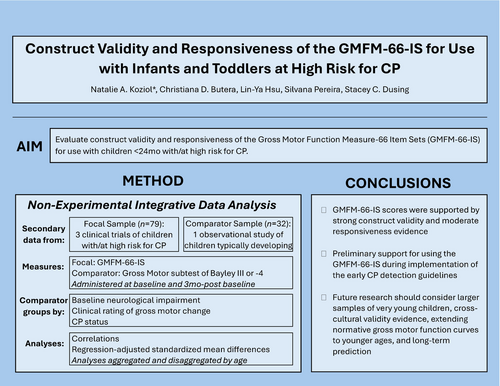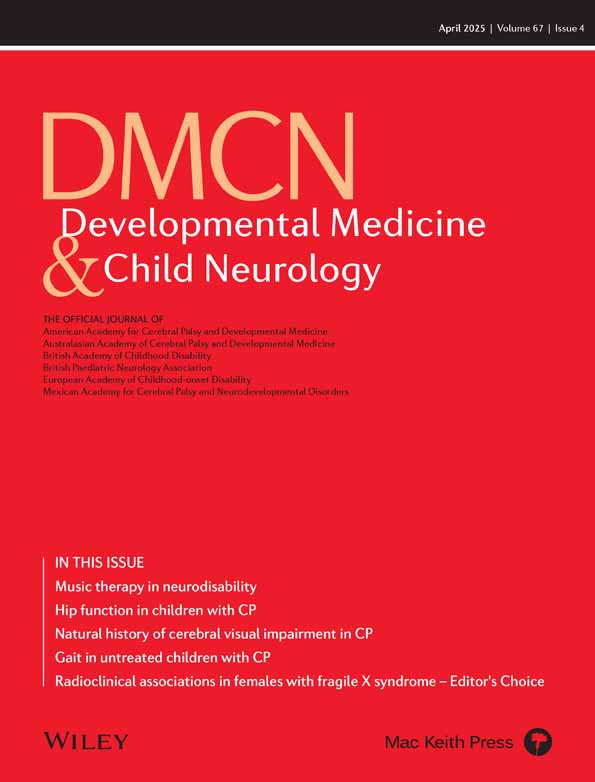Gross Motor Function Measure-66 Item Sets for use with infants and toddlers at high risk for cerebral palsy: Construct validity and responsiveness
There is a critical need to develop, evaluate, deliver, and monitor response to quality interventions designed for young children with cerebral palsy (CP). To do so requires measures of children's gross motor skills (movement involving the whole body such as walking, running, jumping, and hopping) that are accurate, reliable, and practically feasible. One such promising tool is the Gross Motor Function Measure-66 Item Sets (GMFM-66-IS), but this tool has not been sufficiently evaluated for use with very young children with CP. The GMFM measures how much of a task the child can do versus how well the child performs the task.
The purpose of this non-experimental study was to examine the accuracy of the GMFM-66-IS in evaluating the gross motor skills of children less than 24 months of age who have or are at high risk for CP. Non-experimental studies take place in real-life settings, where the researchers cannot control all possible variables. Analyses were based on existing data from three clinical trials of children with or at high risk for CP (79 infants and toddlers) and one observational study of typically developing children (32 infants). Children's gross motor skills were measured at two timepoints, 3 months apart.





